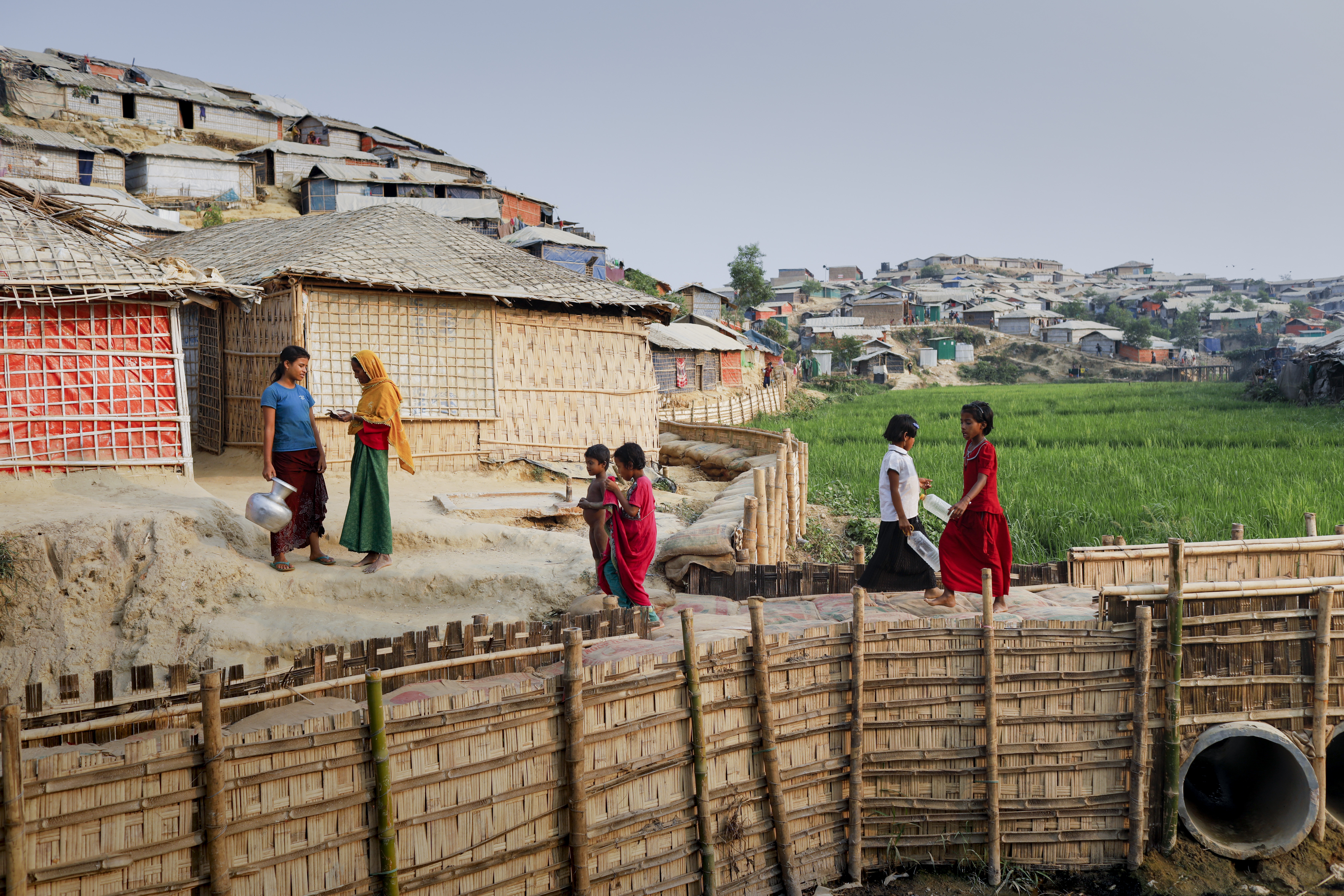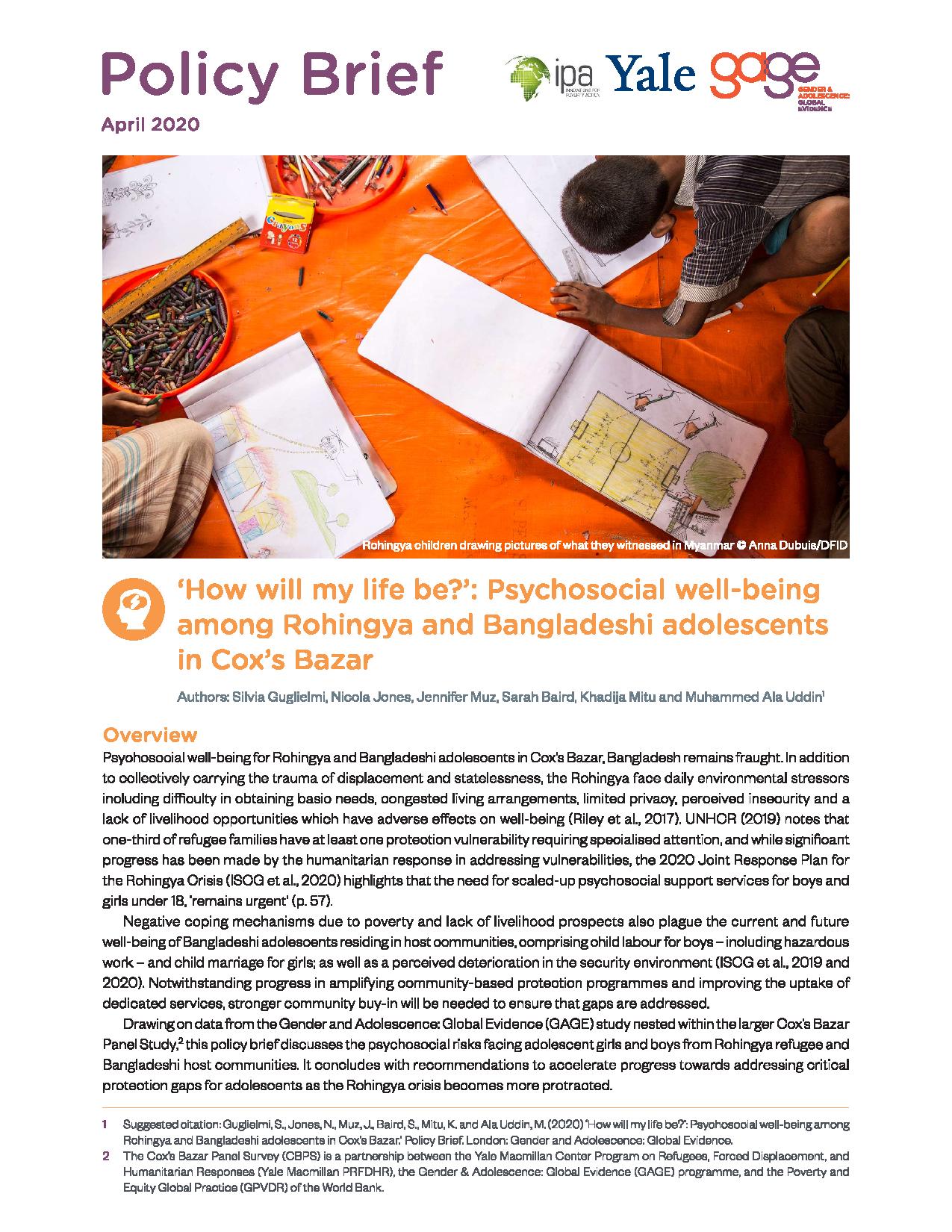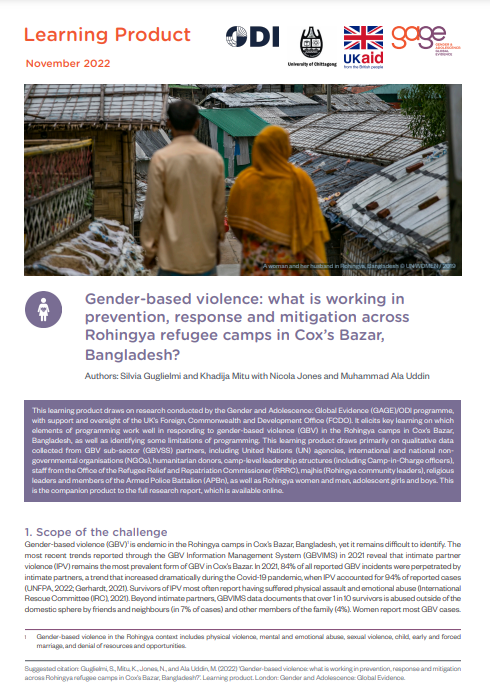
Displacement, Violence, and Mental Health: Evidence from Rohingya Adolescents in Cox's Bazar, Bangladesh
publication
Displacement, Violence, and Mental Health: Evidence from Rohingya Adolescents in Cox's Bazar, Bangladesh
09.02.2022 | Bangladesh
Country
Bangladesh
Capability domains
Psychosocial well-being
Audience type
Researcher
Year of publication
2022
Authors
Katherine O'Connor and Jennifer Seager
The Rohingya have endured generations of trauma through displacement and targeted violence in Myanmar. Hundreds of thousands have been forced out of the country, with a large proportion settling in refugee camps in Cox's Bazar, Bangladesh. This study examines the impacts of exposure to trauma on mental health outcomes among Rohingya adolescents living in Bangladesh. Post-traumatic stress disorder (PTSD) and depression are examined as outcomes. The main explanatory variable is a measure of exposure to trauma at two levels of proximity (experiencing and witnessing). Resilience is investigated as a potential effect modifier. Experiencing and witnessing traumatic events are positively and significantly associated with PTSD and depression. However, this effect is only seen for PTSD as a continuous measure, reflecting high rates of low-level PTSD in this population. Resilience is found to reduce the effects of trauma on depression, indicating an effect modification of this relationship.
Suggested citation
O'Connor, K. and Seager, J. (2021) 'Displacement, Violence, and Mental Health: Evidence from Rohingya Adolescents in Cox's Bazar, Bangladesh.' International Journal of Environmental Research and Public Health 17;18(10):5318. (DOI: 10.3390/ijerph18105318)


